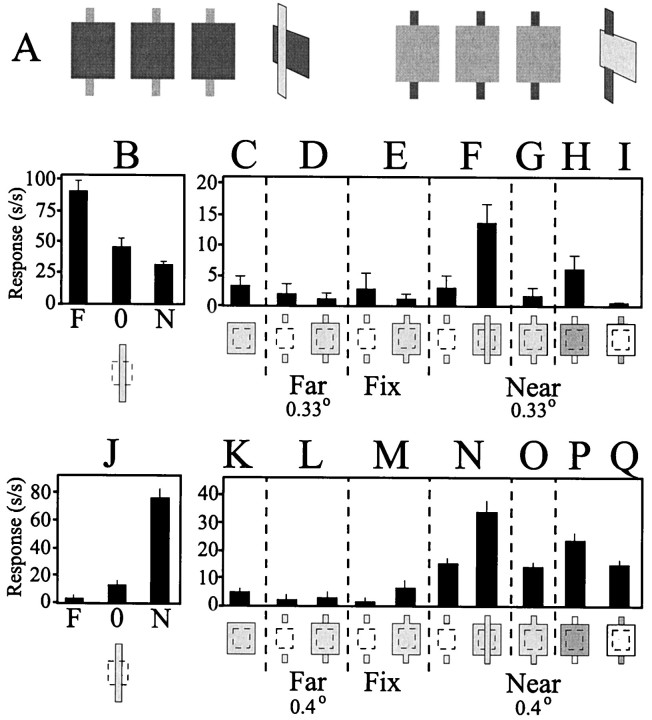Fig. 9.
V2 cells respond to Metelli color rules.A, Stereograms and diagrams of stimulus configurations that support the construction of illusory contours to form the boundaries of a transparent bar. The presence or absence of an illusory contour depends on the relative contrasts of the stimuli involved.Left, Presenting light tabs with crossed disparity and a darker large square supports the generation of a transparent bar (light vertical bar) bounded by illusory contours located infront of a backgroundfield. Right, On the other hand, reversing the contrast relationship generates a percept of two dark tabs hovering in front of a lighter background, with no illusory contours extending between the tabs. B—I, A V2 Far cell (stimulus orientation was 100°) that responds to the illusory contours generated either by an isoluminant stimulus configuration (F, right) or by the transparent stimulus configuration (H) in accordance with Metelli rules is shown. This cell does not respond when the relative stimulus contrast relationships do not support formation of an illusory contour. J—Q, This V2 Near cell (stimulus orientation was 40°) also responded to the illusory contour when the Metelli rules supported the formation of an illusory contour (N, P) but failed to show an enhanced response when the color conditions violated the Metelli rules (Q). Other figure conventions are as described in Figures 7 and 8.

